 |
on (#70RM2)
Attorney General Pam Bondi posted on X that the Department of Justice contacted Facebook in order to have a group removed that she claimed "was being used to dox and target" US Immigration and Customs Enforcement agents operating in Chicago. We reached out to Meta for confirmation and a representative said, "This Group was removed for violating our policies against coordinated harm," however they did not confirm the name of the group or whether the DOJ was involved in the action.Officers for the immigration agency have reportedly been moving through Chicago with facial coverings, no name tags and sometimes in vehicles with no license plates, although a US District Judge ruled that all ICE agents who are not undercover are required to display visible identification while operating in the Chicagoland area.The Department of Justice has demanded that other tech companies remove content the current administration has deemed critical of its immigration policies and practices. At the start of the month, Apple removed ICEBlock, an app for tracking the movements of immigration agents, from the App Store following similar pressure from Bondi. "Capitulating to an authoritarian regime is never the right move," ICEBlock developer Joshua Aaron said in an interview following the action. "Our mission has always been to protect our neighbors from the terror this administration continues to reign down on the people of this nation."This article originally appeared on Engadget at https://www.engadget.com/meta-removes-facebook-group-for-tracking-ice-agents-after-doj-pressure-203429574.html?src=rss
|
 Engadget is a web magazine with obsessive daily coverage of everything new in gadgets and consumer electronics
Engadget is a web magazine with obsessive daily coverage of everything new in gadgets and consumer electronics
| Link | https://www.engadget.com/ |
| Feed | https://www.engadget.com/rss.xml |
| Copyright | copyright Yahoo 2025 |
| Updated | 2025-12-14 18:50 |
 |
by Ian Carlos Campbell on (#70RHG)
In order to avoid paying billions of dollars in fines for violating the European Union's Digital Markets Act, Google is considering changing how search results are displayed, Reuters reports. EU regulators first took issue with Google's Search and Play Store businesses in March 2025, claiming it favored its own services in search results over third-party options and prevented developers from informing customers of alternative ways of accessing apps.One of regulators main issues with Google Search was that Google appeared to favor results from services like Google Flights or Google Hotels over ones from "vertical search services," providers that specialize in displaying search results from a specific industry, like Expedia or Hotels.com. To avoid fines, Google now wants Search to give VSS businesses equal treatment in results."We will create the opportunity for each VSS to show its own box on Search. A VSS box will be populated with results from that VSS inventory," Google said in a proposal viewed by Reuters. Results from Google's own services will exist with the same formatting alongside, and the winning VSS box will be displayed in search results based on "objective and non-discriminatory criteria." Importantly, search results from actual airlines and car rental companies won't be excluded, they'll also appear in a box "above or below the VSS box depending on the relevance to the user's query."Engadget has asked Google to comment on Reuters'report and to confirm the details of its proposed changes to Google Search. We'll update this article if we hear back.Like Apple, Google faces significant scrutiny from the EU because of its monopolistic control over its various platforms and services. The threat of fines from the DMA has forced Apple to open up its products to third-party app stores, among a host of other changes. Clearly, Google is willing to tweak what once seemed like untouchable pillars of its business to avoid fines, too. Whether these proposed changes will be enough for the regulators remains to be seen, though.This article originally appeared on Engadget at https://www.engadget.com/big-tech/google-reportedly-offers-to-tweak-search-results-to-avoid-eu-fine-193940005.html?src=rss
|
 |
by Andre Revilla on (#70RF0)
Customer service support company 5CA has released a statement contradicting claims by Discord that it was the victim of a hack last month. On October 3, Discord disclosed a data breach that the company says included a small number" of government IDs like driver's licenses and passports, which some users had submitted to verify their ages. Days later the company updated its statement to name 5CA as the target of the hack, which Discord contracts as part of its customer service efforts. It also disclosed that the "small number" of government IDs encompasses roughly 70,000 users."We are aware of media reports naming 5CA as the cause of a data breach involving one of our clients. Contrary to these reports, we can confirm that none of 5CA's systems were involved, and 5CA has not handled any government-issued IDs for this client. All our platforms and systems remain secure, and client data continues to be protected under strict data protection and security controls," the company's statement reads in part. The company goes on to explicitly state "the incident occurred outside of our systems and that 5CA was not hacked."5CA says that a preliminary investigation showed that the incident may have been the result of "human error," though it offers no details as to what exactly that implies. In a recent interview with BleepingComputer, the hackers who claimed responsibility for the breach said they had access to Discord's Zendesk account for 58 hours on September 20. The group claims they gained entry through compromised login credentials belonging to a support agent employed by a third-party company. Discord has not yet responded to the company's claims.Update 2:58 PM ET: Added more context about the breach.This article originally appeared on Engadget at https://www.engadget.com/cybersecurity/the-company-discord-blamed-for-its-recent-breach-says-it-wasnt-hacked-175536278.html?src=rss
|
 |
by Lawrence Bonk on (#70RHH)
Kobo is making a remote control for its line of ereaders. The appropriately-named Kobo Remote costs $30 and will be available to purchase on November 4.A remote control for an ereader may seem silly to some, but avid readers will likely appreciate this accessory. It's basically a wireless page turner, so users can lay in bed and read all day without having to physically hold the device or prop a hand up to push a button every 30 seconds. Kobo is calling it "the ideal reading companion."It has been custom-built for Kobo products and will be available in both black and white, which matches the company's other products. It can integrate with any Kobo ereader with Bluetooth functionality, which includes the Libra 2 and the well-reviewed Clara Colour.In a Canadian winter, we know that sometimes maximum reading comfort means burrowing down in the blankets, tucking yourself in and not emerging until spring," said Rakuten Kobo CEO Michael Tamblyn. The Kobo Remote is the perfect accessory for peak immersive reading; it's an invitation to lounge deeper, multitask smarter and simply enjoy reading without limits, no matter whether your environment is beach or blankets."The remote will be available in multiple regions, including the US, Canada, Europe, Australia, Singapore, Japan and many others. The company says it'll be sharing more details about the remote soon, but we aren't sure what details could be left to share. It's a remote control for an ereader. Maybe it can do one or two unexpected things.This article originally appeared on Engadget at https://www.engadget.com/mobile/tablets/kobo-made-a-remote-control-for-its-ereaders-185010955.html?src=rss
|
 |
on (#70RHJ)
OpenAI announced today that it is creating an advisory council centered on its users' mental and emotional wellness. The Expert Council on Well-being and AI comprises eight researchers and experts on the intersection of technology and mental health. Some of the members were experts that OpenAI consulted as it developed parental controls. Topics of safety and protecting younger users have become more of a talking point for all artificial intelligence companies, including OpenAI, after lawsuits questioned their complicity in multiple cases where teenagers committed suicide after sharing their plans with AI chatbots.This move sounds like a wise addition, but the effectiveness of any advisor hinges on listening to their insights. We've seen other tech companies establish and then utterly ignore their advisory councils; Meta is one of the notable recent examples. And the announcement from OpenAI even acknowledges that its new council has no real power to guide its operations: "We remain responsible for the decisions we make, but we'll continue learning from this council, the Global Physician Network, policymakers, and more, as we build advanced AI systems in ways that support people's well-being." It may become clearer how seriously OpenAI is taking this effort when it starts to disagree with the council, whether the company is genuinely committed to mitigating the serious risks of AI or whether this is a smoke and mirrors attempt to paper over its issues.This article originally appeared on Engadget at https://www.engadget.com/openai-forms-advisory-council-on-wellbeing-and-ai-183815365.html?src=rss
|
 |
by Ian Carlos Campbell on (#70RHK)
OpenAI plans to open the floodgates to more adult uses of ChatGPT starting in December, according to a new post from CEO Sam Altman. The company announced that it would add parental controls and automatic age detection features in September, and it seems like a benefit of sorting out children from adults is an ability to offer more freedom in what ChatGPT can show users."In December, as we roll out age-gating more fully and as part of our 'treat adult users like adults' principle, we will allow even more, like erotica for verified adults," Altman says. Some avid ChatGPT users already regularly manipulate the chatbot to engage in NSFW conversations, but Altman's announcement sounds more like tacit approval from OpenAI that those use-cases are okay.
|
 |
on (#70RHM)
Spotify is taking the video versions of some of its podcasts to another platform entirely: Netflix. Starting in the US in early 2026 (with more markets and shows to follow), Netflix will start offering sports, culture, lifestyle and true crime podcasts that Spotify Studios and The Ringer produce.Nine sports podcasts will be available at the jump, including The Bill Simmons Podcast, The Zach Lowe Show, Fairway Rollin' and The Ringer's F1, fantasy football, NFL and NBA shows. Other video podcasts that are coming to Netflix include The Rewatchables, The Recipe Club, Dissect, Conspiracy Theories and Serial Killers.Netflix sees these podcasts as complementary to its current offerings (The Ringer F1 Show, for instance, will sit neatly alongside Drive to Survive). Of course, for Spotify, this is a way to get more eyeballs and eardrums on its original programming.With TV viewing becoming a bigger priority for YouTube over the last few years, this seems like a way for Netflix to bite back in the battle for consumer attention, given the prevalence of video podcasts on Google's platform. Many people use streaming services for background comfort sound, and turning to podcasts or talk-radio style formats (something Disney+ also offers with The Rich Eisen Show on weekdays) may be a way for them to do that after pulling the plug on cable and broadcast TV.This article originally appeared on Engadget at https://www.engadget.com/entertainment/streaming/some-spotify-video-podcasts-are-coming-to-netflix-180000074.html?src=rss
|
 |
on (#70RF1)
YouTube is bringing a wave of quality of life improvements to its platform. These visual updates and new features will roll out globally starting this week.The main update to YouTube is a redesigned video player that has made the icons and UI elements to obscure less content. This new player design will appear on mobile, web and TV devices. Some users have had access to this feature for about a month, so it may not be brand new to everyone. The seek feature where a viewer can double-tap to skip has also been updated in a way that YouTube says is "more modern and less intrusive" and transitions between tabs have also been upgraded on mobile.For those of you who spend a lot of time in the comments, you'll see a new threaded approach to replies. This update aims "to provide a more focused reading experience within the replies panel." The process of adding videos to playlists and the Watch Later queue has also been simplified and adjusted to be a "smoother and more visual" experience. Finally, some content will start displaying little animations when you hit the like button. The blog post gives music videos and sports videos as examples of where users may start seeing the flashier visual.This article originally appeared on Engadget at https://www.engadget.com/entertainment/youtube/youtube-rolls-out-its-redesigned-video-player-globally-174609883.html?src=rss
|
 |
on (#70RF2)
X has long been a hotbed for fake accounts, bots and other scammy behavior. Many of those dynamics have been exacerbated by the rise of paid verification, which boosts the visibility of anyone who pays for a subscription. Now, the company is running a small experiment that could help users better identify potentially suspicious accounts.The service is starting to test a new "about this account" feature that will provide details about when an account joined the platform, where the person running it is based, how many times the username has been changed and how the account is connected to X. The feature is a lot like the "page transparency" information on Facebook, which provides similar details about when a given page was created and where the people running it are based."When you read content on X, you should be able to verify its authenticity," X's head of product, Nikita Bier, shared in a post about the change. "This is critical to getting a pulse on important issues happening in the world."If fully rolled out, this type of feature could help people on X understand a lot of common scams and other deceptive behavior on the platform. For example, scammers often change the handle of a recently compromised account in order to trick an account's existing followers. And understanding the location of an account could help users root out people lying about their identity.However, it sounds like it could be some time before the feature is implemented in a way that could be broadly useful. Bier said that initially X will show this info on "a handful of profiles of X team members" - most of whom already have an official "X" badge on their profiles - in order to get feedback on the change.
|
 |
by Lawrence Bonk on (#70RF3)
SteelSeries just released a refresh of its popular Arctis Nova 7 midrange gaming headset. The Nova 7 Gen 2 offers significantly improved battery life, with an increase of around 40 percent when compared to the original version. This translates to 54 hours of use per charge, which is a mighty fine metric. There's quick-charging that can provide six more hours of use in 15 minutes at the outlet.It charges via USB-C and can simultaneously play audio from both a 2.4GHz wireless connection and Bluetooth audio. This means that users can mix and match audio sources, which comes in handy when gaming. The headset connects wirelessly to all major gaming consoles, in addition to PCs and phones.The Arctis Nova 7 Gen 2 integrates with the company's mobile app. This offers more than 200 presets for specific games, all of which adjust the EQ to match what's being played. On PC, the presets will automatically adjust depending on the game.These are headphones intended for gaming, so they also include a noise-cancelling microphone. This little boom mic can be hidden within the headset and disabled when using a standalone microphone.As for aesthetics, the Nova 7 looks a lot like the company's high-end headsets. It's available in three colors, including black, white and magenta. The headset is available to purchase right now and costs $200. It does lack a few features included with its higher-priced cousins, like the swappable battery system and active noise cancellation.This article originally appeared on Engadget at https://www.engadget.com/audio/headphones/steelseries-updated-nova-7-gaming-headset-offers-much-better-battery-life-171435527.html?src=rss
|
 |
by Matt Tate on (#70RBV)
Spotify has introduced a new "managed accounts" feature aimed at younger listeners. Initially piloted last year and launching in seven new markets, including the US, today, it allows parents and guardians with a Spotify Premium Family plan to allocate their children a dedicated profile with their own personalized recommendations and custom playlists.The idea is that the adults can filter out explicit content, limit the playback of certain artists and hide video playback features, including Canvas, should they want to. Users on this profile can't use interactivity features like Messages either.Perhaps most importantly of all for some, a managed account also ensures that your personal Wrapped results at the end of the year aren't dominated by whatever TikTok-viral songs the kids have been obsessively playing on repeat for months - and they won't mess with your Discover Weekly algorithm either. Spotify's 'Exclude from your Taste Profile' feature already offers a way of keeping the nonsense your kids might be listening to away from your own recommended content, but this feels like a cleaner option for families.Standard Spotify Premium features like daylist and the aforementioned Discover Weekly remain available to someone using a managed account, making it a better option for kids becoming interested in music (they may even have gotten hooked on a band you've been listening to in the car) than the Spotify Kids app, which is very much designed for the 'Baby Shark' devotees. It's probably helpful to think of a managed account as a bridge between that and an unrestricted Premium account where all the music in the world is at your fingertips.To set up a managed account, the plan owner has to go into their account settings within the Spotify app and select "Add a Member," followed by selecting "Add a listener aged under 13." The app will provide further instructions from there. As a reminder, a Spotify Premium Family plan is required to set up a managed account. This currently costs $20 per month.This article originally appeared on Engadget at https://www.engadget.com/entertainment/music/spotifys-managed-accounts-will-help-keep-your-kids-from-wrecking-your-music-taste-profile-154406843.html?src=rss
|
 |
by Mariella Moon on (#70R8H)
SpaceX's second-generation Starship vehicle has just made a graceful exit. The company achieved every major objective it set for the super-heavy lift vehicle's 11th flight test, the second-gen Starship's final flight, which launched from Starbase in Texas on October 13. It followed another successful test in August, which saw Starship deploy its payload for the first time ever. Before those two most recent flights, SpaceX suffered a series of failures: Starship exploded during its ascent stage in the company's seventh and eighth tests, and it failed to deploy its payload during its ninth test. Another Starship vehicle blew up on the ground during a routine test while SpaceX was preparing for its 10th flight.All of the vehicle's 33 Raptor engines ignited upon launch, and the stage separation and first-stage ascent went smoothly. The Super Heavy booster splashed down into the ocean as planned, while Starship was able to deploy all its Starlink simulators before re-entering the atmosphere. During its reentry burn, SpaceX intentionally stressed the vehicle to determine the capabilities of its heatshield. And with just a few minutes left to the flight, the vehicle executed a banking maneuver to "mimic the trajectory that future missions returning to Starbase will fly."The company says it will now focus on developing the next generation of Starship and Super Heavy. It has multiple versions of the vehicle and the booster being prepared for tests at the moment, and it expects them to be used for the first Starship orbital flights and operational payload missions.
|
 |
by Valentina Palladino on (#70M8N)
It's safe to say the Nintendo Switch 2 is the game console to get this year, and if you already got your hands on one, you've probably loaded it up with all your old Switch games and new Switch 2 games. If you haven't thought about adding more storage to the console, now's the time to do so. The Switch 2, unfortunately and inconveniently, cannot work with just any old microSD card - it only works with newer microSD Express cards. But now you can actually pick up one of these new cards on sale. This 128GB PNY microSD Express card is 15 percent off and down to $38. Engadget's Jeff Dunn has been testing microSD Express cards since the Switch 2 launched. The best microSD Express card for Switch 2 at the moment is really the one you can most easily afford. While the cards he's tried out so far didn't perform identically in our benchmark tests, the differences in overall performance and load times will be tough for most people to notice. Thankfully, the ones he's tested so far have been good - there isn't a bad one in the bunch, and while the most consistent performer was the SanDisk microSD Express card, you won't really sacrifice by getting a different one. In fact, at least in the case of this deal, you'll be gaining by saving some cash. PNY's card in particular was actually slightly faster than SanDisk's in our testing when it came to moving games from the card back to the Switch 2's internal storage. However, it was a bit slower in writing games to the card itself. That just means you may wait a few extra minutes before you can open Mario Kart World and get to racing, but for most people, the difference will be negligible.This article originally appeared on Engadget at https://www.engadget.com/deals/pick-up-this-nintendo-switch-2-compatible-microsd-express-card-for-less-than-40-134147278.html?src=rss
|
 |
by Lawrence Bonk on (#70R5J)
Therabody just revealed a bunch of new products, including the TheraFace Mask Glo. This MF Doom-looking full-face mask offers quite a different experience from the pre-existing TheraFace Pro. The Pro is essentially a face massager, but the Mask Glo is a giant mask that uses LED lights to "reduce fine lines and wrinkles, firm and tighten skin and even tone and texture."The company promises results in "as little as eight weeks" with daily 12-minute sessions. The mask has been cleared by the FDA and includes 504 medical-grade LEDs to deliver "an effective, full-face treatment." It also doubles as a Halloween mask if you are so inclined. Tis the season. The TheraFace Mask Glo is available to order today and costs $380.The Theragun Mini Plus is a portable version of its popular massage gun, but with one feature missing from the original Mini. This one has heat. It combines "percussive massage with consistent, rapid heat." Therabody says this results in a "benefits 3x faster than percussive massage alone."TherabodyIt features three massage speeds, three heat levels and app-guided routines to target specific muscle groups. The gun is TSA-approved, so bring it on a plane. The Theragun Mini Plus is available today and costs $280.The company also released a new version of the Theragun Prime massage gun, which costs $330, and the Theragun Sense massage gun. That last one features an LCD screen and real-time pressure feedback to make sure people are using it right. It costs $300.This article originally appeared on Engadget at https://www.engadget.com/home/therabody-just-introduced-the-theraface-mask-glo-which-uses-leds-to-reduce-wrinkles-123044315.html?src=rss
|
 |
by Andre Revilla on (#70R5K)
TiVo has confirmed that it has stopped selling its DVR set-top boxes, marking the end of an era that changed how we watch television forever. As first reported earlier this month by Cord Cutters News, TiVo Corporation quietly pulled its once-groundbreaking digital video recorder from its website. Holding company Xperi later confirmed that the listing was removed on October 1.I can confirm that as of October 1, 2025, TiVo stopped selling physical DVR products, including hardware and accessories, both online and through agents," a TiVo spokesperson confirmed to PCMag. TiVo no longer manufactures hardware, and our remaining inventory is now depleted, though we will continue to offer support for the products going forward."The TiVo box revolutionized television upon its launch in 1999, allowing viewers to pause, rewind and record live television. There was a time when you would just miss the start of a show if you weren't punctual, and you'd have to sync grabbing a snack with a commercial during the big game. You also had to actually watch the commercials, something that is unfortunately making a comeback with an increase in ad-supported streaming.The DVR pioneer is now a software company. It has been producing TiVo OS almost exclusively in the European market since 2022, though the smart TV OS premiered in the US this year via Sharp. The Sharp Smart TV Powered by TiVo" launched as a 55-inch QLED display with 4K resolution and HDR support. TiVo OS functions like many other television operating systems, aggregating streaming services and offering its own library of free and paid content.TiVo will still offer customer support for its now-discontinued boxes, which bodes well for customers who have purchased a lifetime plan.This article originally appeared on Engadget at https://www.engadget.com/entertainment/tv-movies/tivo-has-discontinued-its-dvr-boxes-123037999.html?src=rss
|
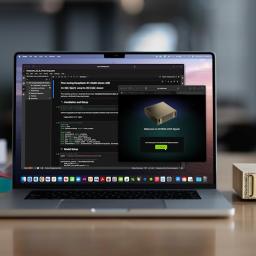 |
by Steve Dent on (#70R5M)
NVIDIA's DGX Spark AI computer revealed earlier this year goes on sale today for $3,999, the company announced. Though relatively tiny, it hosts the the company's entire AI platform including GPUs and CPUs, along with NVIDIA's AI software stack "into a system small enough for a lab or an office," NVIDIA said.The Spark isn't something you'd buy to play Baldur's Gate 3, though. It's designed to give developers, researchers and data scientists enough computer power to run complex AI models. Early recipients of the PCs include Anaconda, Google, Hugging Face, Meta and Microsoft. NVIDIA CEO Jensen Huang even hand-delivered a unit to Elon Musk at SpaceX's headquarter in Starbase, Texas.The DGX has plenty of power on offer despite its diminutive 2.6 pound size. It boasts NVIDIA's GB10 super system-on-chip that weds a 20-core ARM CPU with a Blackwell GPU powered by the same number of cores as an RTX 5070 GPU. It's outfitted with 128GB of LPDDR5x RAM shared between the CPU and GPU and includes 4TB of NVMe storage, along with four USB-C ports, Wi-Fi 7 and an HDMI connector. NVDIA calls it "the world's smallest AI supercomputer."The DGX Spark runs Nvidia's DGX OS, a custom version of Ubuntu Linux that's configured with AI software. With that, developers can access NVIDIA AI models, libraries and microservices in order to do chores like refining image generation or creating AI chatbots.The DGX Spark is also an entry point for similar machines. Other vendors like Dell, HP, Lenovo and ASUS showed off similar AI-oriented mini PC's at Computex this year using the same GB10 chip, with Acer's Veriton GN100 being one example.The DGX Spark mini PC is now on sale for $3,999 through NVIDIA and its partners. While not cheap, it's a drop in the bucket for AI developers and all of the companies listed above, and considering the hardware inside, the price doesn't seem unreasonable. NVIDIA is also working on the DGX Station that will feature GB300 Grace Blackwell Ultra Desktop Superchip, with 20 petaflops of performance and 784GB of unified system memory. A price has yet to be announced for that modelThis article originally appeared on Engadget at https://www.engadget.com/ai/nvidia-starts-selling-its-3999-dgx-spark-ai-developer-pc-120034479.html?src=rss
|
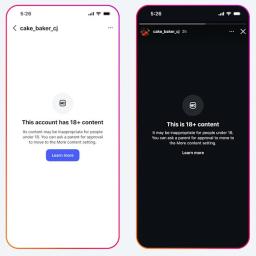 |
on (#70R5N)
Instagram is tightening the settings on its "teen accounts" to add new limits on what kids on the platform are able to see. Older teens will also no longer be able to opt out of the default stricter settings without parental approval.Meta first introduced teen accounts for Instagram a year ago, when it began automatically moving teens into the more locked-down accounts that come with stricter privacy settings and parental controls. The company recently rolled out the accounts for teens on Facebook and Messenger too, and has used AI tools to detect teens that are lying about their age.While teen accounts are meant to address long-running criticism about Meta's handling of teen safety on its apps, the measures have been widely criticized as not going far enough to protect the company's most vulnerable users. A recent report from safety advocates at Heat Initiativefound that "young teen users today continue to be recommended or exposed to unsafe content and unwanted messages at alarmingly high rates while using Instagram Teen Accounts." (Meta called the report "deeply subjective.")Now, Meta is locking down teen accounts even more. With the latest changes, teens will no longer be able to follow or see content from accounts that "regularly share age-inappropriate content" or that seem "age-inappropriate" based on their bio or username. Meta says it will also block these accounts from appearing in teens' recommendations or in search results in the app.Instagram will also block a "a wider range of mature search terms" for teens, including words like "alcohol," "gore," and intentional misspellings of these words, which is a common tactic to avoid Instagram's filters. And, even if an account a teen already follows shares a post that goes against these rules, teens should be prevented from seeing it, even if it's sent to their DMs.Instagram will block teens from searching for more term associated with inappropriate content,.MetaWhile these changes may seem like Meta once again filling somewhat obvious gaps in its safety features, the company says the revamp is meant to make the content teens encounter on Instagram more like a PG-13 movie. "Just like you might see some suggestive content or hear some strong language in a PG-13 movie, teens may occasionally see something like that on Instagram - but we're going to keep doing all we can to keep those instances as rare as possible," the company explained in a blog post.That's a somewhat confusing analogy as there's a fairly wide spectrum of what might appear in a PG-13 movie. Meta also says that some of its rules for teens are more restrictive than what teens might see in a PG-13 movie. For example, the app aims to prevent teens from seeing any kind of "sexually suggestive" content or images of "near nudity" even though that type of content might appear in movies rated for 13-year-olds.For parents that want even tighter restrictions, Instagram is also adding a new "limited content" setting that filters "even more" content from teens' view (Meta didn't explain what exactly would be restricted). The setting also prevents teens from accessing any comments on the platform, either on their own posts or other users'. Finally, Meta is testing a new reporting feature for parents that use Instagram's parental control settings to monitor their teens' use of the app. With the feature, parents can flag specific posts they feel are inappropriate to trigger a review by Meta.Meta says the latest changes will be rolling out "gradually" to teen accounts in the US, UK, Canada and Australia to start and that it will eventually "add additional age-appropriate content protections for teens on Facebook."This article originally appeared on Engadget at https://www.engadget.com/social-media/instagram-makes-teen-accounts-more-restrictive-120000653.html?src=rss
|
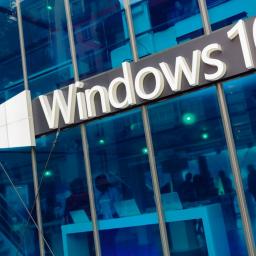 |
by Daniel Cooper on (#70R5P)
After more than a decade of service, Microsoft is declaring the end of Windows 10's usable life. If your machine still uses it, rest assured it'll continue to work, but you won't see any more software and security updates. If your machine is compatible, you'll be able to upgrade to Windows 11 for free, or this can provide the justification you need to buy a new machine.But there's also a way to keep your status quo without the additional stress, at least for the next year. It's possible to sign up to Microsoft's Extended Security updates program, giving you an extra year of software and security patches. It won't cost you any money, but you will be expected to sign up to Microsoft's cloud services.If you'd like to keep Windows 10 running and safe, you can head over to our comprehensive guide on what to do. And, if you're ready to upgrade, check out our guide on the best Windows laptops to choose your next purchase.- Dan CooperGet Engadget's newsletter delivered direct to your inbox. Subscribe right here!The news you might have missed
|
 |
by Mariella Moon on (#70QYW)
Ofcom has slapped 4chan with a 20,000 ($26,700) fine for failing to comply with the internet and telecommunications regulator's request for information under the UK's Online Safety Act of 2023. The regulator has released an update for 11 of the investigations it opened after the first of its online safety codes became enforceable in March this year. Apparently, 4chan has ignored its requests for a copy of its illegal harms risk assessment and to provide information about its qualifying worldwide revenue. This is the first fine Ofcom has handed down under the new law, which was designed to prevent children from accessing harmful content online and which has prompted websites like Reddit and X to put up age verification measures.When the regulator launch its probe into 4chan in June, it said it received complaints about illegal content on the anonymous online board. It doesn't exactly come as a surprise that 4chan refuses to give the regulator information about the risks of illegal content on its website: Back in August, the service filed a lawsuit against Ofcom, arguing that the enforcement of the UK's Online Safety Act violates Americans' freedom of speech. "This fine is a clear warning to those who fail to remove illegal content or protect children from harmful material," said Liz Kendall, the UK Secretary of State for Science, Innovation and Technology. The regulator is also imposing an additional penalty of 100 ($133) per day on 4chan until it complies with its requests for information.Ofcom has announced the results of other investigations, as well, such as finding "serious compliance concerns" with two file-sharing services that have now deployed an automated tool that can detect and quickly remove uploads with child sexual abuse material (CSAM). Four other file-sharing services that were also under investigation for CSAM chose to geoblock access from UK IP addresses instead, so the regulator closed their cases.This article originally appeared on Engadget at https://www.engadget.com/cybersecurity/uk-regulator-fines-4chan-for-ignoring-online-safety-act-demands-045026169.html?src=rss
|
 |
on (#70QSP)
Microsoft is continuing to roll out in-house AI models, further decreasing its reliance on long-standing partnership with OpenAI. Today, the company introduced MAI-Image-1, its first internally-developed image-generating AI model. According to the blog post, MAI-Image-1 is particularly good for creating photorealistic results, and can generate natural lighting and landscapes. For now, the model is being tested on LMArena, and Microsoft said it plans to roll out MAI-Image-1 to Copilot and its Bing Image Creator "very soon."Over the summer, Microsoft made its first break from collaborating with OpenAI when it unveiled its first two in-house trained models, MAI-Voice-1 and MAI-1-preview. At that time, Microsoft AI division leader Mustafa Suleyman said in an interview that the company had "an enormous five-year roadmap that we're investing in quarter after quarter." So far, it's at least setting a solid clip of releases.This article originally appeared on Engadget at https://www.engadget.com/microsoft-debuts-its-first-in-house-ai-image-generator-224153867.html?src=rss
|
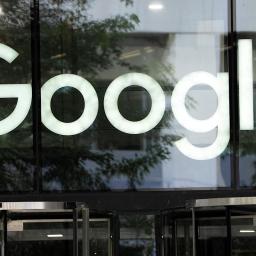 |
on (#70QSQ)
Google is tweaking how sponsored results will appear in Search. Going forward, it will group any text ads on the Search page into a "Sponsored results" section that will appear at the top of the screen. The size of the ads is unchanged and Google says there will never be more than four ads in a grouping. Once you scroll past the section with ads, you can click a button to hide all sponsored results.According to Google, "the new design helps people navigate the top of the page more easily." Maybe that's because people have gotten used to automatically looking farther down the search results to skip the AI Overviews. Google's announcement even noted that the sponsored tab might appear either above or below its AI-generated summary. What's another second of scrolling to actually reach information? But lest you scroll too far, Google will also have a "Sponsored results" section at the very bottom of the page that can only be hidden after you've seen those hits.The new approach is currently rolling out globally on mobile and desktop platforms.This article originally appeared on Engadget at https://www.engadget.com/google-is-making-search-ads-more-and-less-avoidable-215658127.html?src=rss
|
 |
on (#70QQS)
Days ahead of the next Pokemon game release, Centro Leaks is back with another batch of possible leaks about the franchise. The source claims that the same hacker behind last year's so-called Teraleak has released more information they obtained from datamining files owned by Pokemon developer Game Freak that shows the roadmap for all upcoming projects the company has in the works. And there appear to be quite a few of them.This type of hacked information may not be an accurate reflection of Game Freak's actual plans, and any alleged details about the games may not appear in final iterations of the studio's titles. And even if these files are genuine, some of the planning documents are supposedly from 2020, so hardly the freshest info. With those caveats in mind, here's an overview of what the datamining revealed.The leaker claims that the Gen 10 game will be called Pokemon Wind and Waves. Its theme is "infinity" and the project is slated for a 2026 release with a DLC planned for 2027. The datamine also revealed that an early build of the game treated the central area as an MMO-style lobby, where players could see and interact with each other as well as access quest boards. Wind and Waves could also have an MMO raid boss and may give players the ability to explore underwater.A bunch of other details about the plot, characters and mechanics may have been uncovered in the leak.
|
 |
on (#70QQT)
It's been an interesting few months in the realm of streaming service branding. Warner Bros. Discovery reverted Max back to HBO Max after a baffling decision to trim the name in the first place. Disney made Hulu the "global general entertainment brand" on Disney+ when it rebranded the Star hub on the service. Now Apple would like you to know that it's changing the name of its streaming service too. Going forward, Apple TV+ is now just Apple TV.The company revealed the news in very lowkey fashion, at the end of a press release about when its F1 movie will land on Apple TV, the streaming service with a monthly subscription (December 12, FYI). Apple TV+ is now simply Apple TV, with a vibrant new identity," the company said without elaborating.Apple does like to keep things clean, and shearing off the plus sign is one way of doing that. But oversimplification can cause greater confusion.As Apple states in its own press release, Apple TV is available on the Apple TV app" and For a limited time, customers who purchase and activate a new iPhone, iPad, Apple TV or Mac can enjoy three months of Apple TV for free." Did no one at Apple's (generally very effective) marketing team spot the problem with this? Buying Apple TV to get free Apple TV sounds like a recursive capitalist fever dream that will never end.As it stands, you can turn on your Apple TV device to open the Apple TV app to watch Apple TV. There are lots of things in the Apple TV app that aren't actually Apple TV shows or movies and you may have to pay for those separately. The press release also states that you can watch F1 right now if you buy it on Apple TV through the Apple TV app, so you don't have to wait for the film to make its global streaming debut" on Apple TV. What a mess.Apple hasn't fully rolled out the change yet, as there are still plenty of references to Apple TV+" on the streaming service's website. It's still referred to as Apple TV+ on the TV app's listing on the App Store too. I'm interested to see how confusing things really get if, in the coming months, Apple reveals a refreshed Apple TV. You know, that device you can use to watch Apple TV.This article originally appeared on Engadget at https://www.engadget.com/entertainment/streaming/apple-tv-is-now-just-apple-tv-200644609.html?src=rss
|
 |
on (#70QQV)
In a bulletin on Friday, GM announced that it will end its HYDROTEC brand's work on hydrogen fuel cell development. Instead, GM will focus its R&D efforts on batteries, charging technologies and electric vehicles. The company said it will continue its Fuel Cell System Manufacturing joint venture with Honda, which creates cells for data centers and power generation.The post from GM said that due to limited infrastructure and high costs, hydrogen cells simply haven't taken off for consumer vehicles. Lately, the automotive industry seems to agree. GM's shift follows a similar move in February from Toyota, which isn't completely giving up the ghost but instead pivoted its hydrogen cell projects to focus on industrial applications rather than consumer ones.This article originally appeared on Engadget at https://www.engadget.com/gm-ends-development-of-hydrogen-fuel-cells-195212217.html?src=rss
|
 |
by Lawrence Bonk on (#70QNS)
Google's Nano Banana AI image editor became something of a viral sensation when it launched last month. Now the tool is being integrated into a bunch of pre-existing Google products, like Search, NotebookLM and Photos.Perhaps the most notable integration here is with NotebookLM. Nano Banana is being used to drastically change up Video Overviews, offering up six new styles like watercolor and anime. It also now generates contextual illustrations based on sources and there's a new option for micro-videos called Briefs.For the uninitiated, Video Overviews is a neat little tool available to NotebookLM users that automatically generates explainer videos from documents. It can even whip up a narrated slideshow with visuals. The AI-heavy update starts rolling out to Pro users this week and to all users in "the upcoming weeks."Search integration offers new ways to make and edit images while using the official Google app. The company says folks can use a chat prompt to, say, ask the bot to create a stylized version of a pre-existing image. Additionally, photos can be snapped directly from the Lens tool and then edited via the AI. This is rolling out right now in English for US customers, with more countries and languages coming in the near future.We don't have any actual information as to what the Photos integration will look like, with Google simply saying it's bringing Nano Banana to the platform in "the weeks ahead." The company promises more details soon. Nano Banana is an image editor and Google Photos is a service for storing and organizing photos, so it'll likely involve editing these stored images in some way.This article originally appeared on Engadget at https://www.engadget.com/ai/googles-nano-banana-ai-image-editing-is-coming-to-search-notebooklm-and-photos-184111046.html?src=rss
|
 |
on (#70QKE)
California has become the latest state to age-gate app stores and operating systems. AB 1043 is one of several internet regulation bills that Governor Gavin Newsom signed into law on Monday, including ones related to social media warning labels, chatbots and deepfake pornography.The State Assembly passed AB 1043 with a 58-0 vote in September. The legislation received backing from notable tech companies such as Google, OpenAI, Meta, Snap and Pinterest. The companies claimed the bill offered a more balanced approach to age verification, with more privacy protection, than laws passed in other states.Unlike with legislation in Utah and Texas, children will still be able to download apps without their parents' consent. The law doesn't require people to upload photo IDs either. Instead, the idea is that a parent will enter their child's age while setting up a device for them - so it's more of an age gate than age verification. The operating system and/or app store will place the user into one of four age categories (under 13, 13-16, 16-18 or adult) and make that information available to app developers.Enacting AB 1043 means that California is joining the likes of Utah, Texas and Louisiana in mandating that app stores carry out age verification (the UK has a broad age verification law in place too). Apple has detailed how it plans to comply with the Texas law, which takes effect on January 1, 2026. The California legislation takes effect one year later.AB 56, another bill Newsom signed Monday, will force social media services to display warning labels that inform kids and teens about the risks of using such platforms. These messages will appear the first time the user opens an app each day, then after three hours of total use and once an hour thereafter. This law will take effect on January 1, 2027 as well.Elsewhere, California will require AI chatbots to have guardrails in place to prevent self-harm content from appearing and direct users who express suicidal ideation to crisis services. Platforms will need to inform the Department of Public Health about how they're addressing self-harm and to share details on how often they display crisis center prevention notifications.The legislation is coming into force after lawsuits were filed against OpenAI and Character AI in relation to teen suicides. OpenAI last month announced plans to automatically identify teen ChatGPT users and restrict their usage of the chatbot.In addition, SB 243 prohibits chatbots from being marketed as health care professionals. Chatbots will need to make it clear to users that they aren't interacting with a person when they're using such services, and instead they're receiving artificially generated responses. Chatbot providers will need to remind minors of this at least every three hours.Newsom also signed a bill concerning deepfake pornography into law. AB 621 includes steeper potential penalties for "third parties who knowingly facilitate or aid in the distribution of nonconsensual sexually explicit material." The legislation allows victims to seek up to $250,000 per "malicious violation" of the law.In the US, the National Suicide Prevention Lifeline is 1-800-273-8255 or you can simply dial 988. Crisis Text Line can be reached by texting HOME to 741741 (US), CONNECT to 686868 (Canada) or SHOUT to 85258 (UK). Wikipedia maintains a list of crisis lines for people outside of those countries.
|
 |
by Lawrence Bonk on (#70QKF)
Best Buy is holding a sitewide sale on Microsoft Copilot+ PCs with steep discounts up to $700 off. This is fantastic timing, given that Microsoft ends official support for Windows 10 this week. If you're thinking about upgrading, now is likely the time. One cool deal here is for a souped-up version of the Microsoft Surface 7 laptop. This one ships with a Snapdragon X Plus processor, 32GB of RAM and 1TB of internal storage. It also includes a 13.8-inch touchscreen and a battery that gets 20 hours per charge. The laptop ships with Windows 11 Home, which should be relatively futureproof for the next several years. It costs just $1,100, which is a nice discount of $700. This model can be outfitted with even more bells and whistles. There's one with a more powerful Snapdragon X Elite processor and a 15-inch touchscreen. That one costs $1,500, which is a discount of $600. Other deals include the HP Omen gaming laptop with an AMD Ryzen AI 9 HX 375 and NVIDIA GeForce RTX 5070 Ti for $2,000 instead of $2,380 and the MSI Codex gaming desktop with an NVIDIA GeForce RTX 5070 GPU for $1,460 instead of $1,600. There are plenty of other discounted laptops, desktops and accessories on the main sale page. Microsoft will officially end support of Windows 10 on October 14, but it may not be an immediate death knell. There is a way for users to get an additional 12 months of support via the company's Extended Security Updates plan. Many Windows 10 computers can also easily handle Windows 11, and a software update would be much cheaper than buying a new computer. Follow @EngadgetDeals on X for the latest tech deals and buying advice.This article originally appeared on Engadget at https://www.engadget.com/deals/get-up-to-700-off-a-new-microsoft-copilot-pc-before-windows-10-support-ends-165735272.html?src=rss
|
 |
on (#70Q17)
SpaceX is gearing up for the 11th flight test of its Starship megarocket, which will launch from its Starbase in Texas as early as Monday. The launch window opens on October 13 at 7:15PM ET. You'll be able to watch live starting 30 minutes before liftoff on the SpaceX website and on X.As of the morning of October 13, SpaceX appears to be set for the next test flight - there's no word of any delays and the SpaceX X account said last night that weather was 80 percent favorable for a launch today.
|
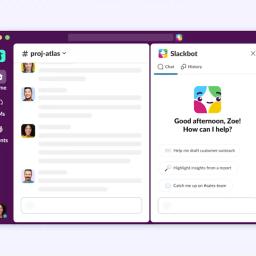 |
by Lawrence Bonk on (#70QGK)
I've been using Slack for like a decade and the platform's proprietary chatbot, Slackbot, has always been a bit underwhelming. It can deliver reminders and notifications and, well, that's about it. That could change in the near future, as the platform is testing a redesigned Slackbot that's chock full of AI.The new Slackbot is basically an AI chatbot like all the rest, but this one has been purpose-built to help with common work tasks. Folks can use natural language to converse with the bot and it can do stuff like whip up project plans, flag daily priorities and analyze reports. It can also help people find information when they only remember a few scant details. The company says it will "give every employee AI superpowers" so they can "drive productivity at AI speed."Slack/SalesforceTo that end, the new Slackbot integrates with tools like Google Drive, Salesforce and One Drive. It can provide "clear insights" by analyzing those other platforms. Slack also says that the chatbot will continue to grow and evolve, eventually being able to "take action on your behalf and build agents at your request, all with no code required."The Verge got a look at the new Slackbot in action and noted that it helped create a social media campaign using a brand's tone and organized a product's launch plan. The publication didn't indicate if the social media campaign and product launch plan were any good.The redesigned and AI-centric Slackbot is currently available as a beta to 70,000 users, but Slack has plans for a broad rollout by the end of the year. Companies will be able to turn off the feature, but all of us individual worker bees won't have that luxury.This is just the latest AI injection by Slack. After all, parent company Salesforce absolutely loves the technology. Slack recently added AI writing assistance to its Canvas document-sharing space and introduced AIgenerated channel recaps and thread summaries. It also recently came out that the company has been using people's chats to train its AI models by default, with companies being forced to specifically request an opt-out.This article originally appeared on Engadget at https://www.engadget.com/ai/slack-is-transforming-its-slackbot-into-a-personalized-ai-companion-154156367.html?src=rss
|
 |
on (#70QGM)
A Broadcom logo and a computer motherboard appear in this illustration taken August 25, 2025. REUTERS/Dado Ruvic/IllustrationREUTERS / ReutersOpenAI is hungry for as much compute power as it can get its hands on, and the company has signed another deal with a chipmaker to help make that happen. This time around, it's teaming up with Broadcom to make custom chips and systems for use in both OpenAI's infrastructure and its partners' data centers.OpenAI is designing the "AI accelerators" and systems. Broadcom will start deploying those racks in the second half of next year, the companies said. The aim is to complete the rollout by the end of 2029. The two companies are said to have started working together 18 months ago.The deal is for 10 gigawatts of chips and it's worth "multiple billions of dollars," according to The Wall Street Journal. It was reported last month that OpenAI and Broadcom were making custom chips together. For what it's worth, the latter's CEO said recently that a new, unnamed client had put in an order worth $10 billion.The Broadcom deal follows agreements that OpenAI recently struck with both NVIDIA and AMD. NVIDIA is investing $100 billion into OpenAI and will provide it with 10 gigawatts of AI infrastructure. The deal with AMD is for six gigawatts of compute power. OpenAI is said to be paying AMD tens of billions of dollars under that agreement and it could ultimately take up to a 10 percent stake in the company. As with the Broadcom rollout, both the NVIDIA and AMD deployments are expected to start in the second half of 2026. OpenAI also inked a deal with Oracle in July for 4.5 gigawatts in data center capacity as part of its Stargate Project.According to recent reports, OpenAI CEO Sam Altman told employees that he wanted the company to build out 250 gigawatts of compute power over the next eight years, significantly up from the 2GW it's expected to have by the end of this year. (For context, 250GW is about a fifth of the energy generation capacity of the entire US, which sits at around 1,200GW.)As things stand, it would likely cost around $10 trillion to buy that much capacity. Altman said OpenAI would have to develop new financing tools to make that happen, but he hasn't elaborated much on what those might look like. Even its current deals have OpenAI on the hook for hundreds of billions of dollars.While the likes of NVIDIA and Microsoft have invested heavily into OpenAI, there isn't a backer on the planet that can plow $10 trillion into the company. As things stand, OpenAI is very, very far away from making up the difference in revenue too. It's reportedly expecting to make $13 billion in revenue this year.This article originally appeared on Engadget at https://www.engadget.com/ai/openai-is-making-its-own-ai-chips-with-broadcoms-help-142242231.html?src=rss
|
 |
by Will Shanklin on (#70HE1)
Those on a tight budget and those who prefer open-ear AirPods will want to check out the latest discount on the AirPods 4. Apple's entry-level wireless earbuds are down to $89 even now after October Prime Day has come and gone. That's 30 percent off their normal rate and the lowest we've seen them. When Apple updated its standard AirPods in 2024, it released two models: one with active noise cancellation (ANC) and one without. We consider the non-ANC models to be the best budget AirPods you can get, so they're an even better buy at this sale price. The ANC versions are also discounted at the moment, so you can pick them up for $119 instead of the usual $180. The AirPods' H2 chip brings a bunch of Pro-adjacent features to the standard model. That list includes Adaptive Audio, Conversation Awareness, Transparency, Personalized Spatial Audio and wireless charging. For calls, it supports Voice Isolation, which helps filter out background noise and make it easier for you to be heard. And if that call is via FaceTime, it supports Apple's 48kHz "cinema-quality" audio. Sound is improved over the AirPods 3. "There's more low-end tone than the previous model right out of the gate, and the punchier treble opens the sound stage so it's wider and more immersive," Engadget's Billy Steele wrote. "The improved frequency response is on full display with Dolby Atmos content (movies, music, and TV), but the AirPods 4 are also more sonically adept with non-spatial tunes and video." You can expect around five hours of battery life on a single charge. With the ANC model, that estimate drops to around four hours with the marquee feature activated. With either version, you can drop them in the charging case to extend their total time to around 30 hours. And hey, it's good to give your ears a rest now and then anyway. This article originally appeared on Engadget at https://www.engadget.com/deals/airpods-4-earbuds-drop-to-an-all-time-low-price-130033554.html?src=rss
|
 |
by Lawrence Bonk on (#70JZ9)
Even if you missed Prime Day last week, you can still save on some of our favorite tech today. That, believe it or not, includes some Apple devices. One of the best deals still lingering on the internet is on the iPad A16, which is down to a record low of $279. This tablet made our list of the best iPads and we particularly recommend it for the budget-conscious. It may lack some of the bells and whistles of its more expensive cousins, but it still gets the job done. It's fast enough for most common tasks and the battery life is solid, at 10 hours per charge. It also ships with 6GB of RAM, which is a decent enough metric. The tablet integrates with Wi-Fi 6 and features a USB-C connector, along with a pair of 12MP cameras. There's also a Touch ID sensor, which can be used to unlock the device and to make payments. This is the most basic tablet in Apple's lineup, so it lacks some features. It doesn't integrate with the Apple Pencil Pro or the Magic Keyboard. The display is also not quite as gorgeous as the iPad Air or Pro, but it's still a Liquid Retina panel.This article originally appeared on Engadget at https://www.engadget.com/deals/apples-entry-level-ipad-is-down-to-a-record-low-price-082743843.html?src=rss
|
 |
by Valentina Palladino on (#5ZNVY)
Smart LED light bulbs are one of the easiest ways to get into the IoT space. These smart lighting solutions let you control your home's illumination from your phone and other connected devices, and in addition to that practicality, they also inject some fun into your space. Color-changing bulbs have a plethora of RGB options for you to customize the lighting mood for your next movie night, date night or game day, or you can opt for cozy warm white light when you need to unwind at the end of a long day.
|
 |
by Jackson Chen on (#70Q03)
We can finally answer the question of who wins in a fight between prime Aang and prime Korra. Avatar Legends: The Fighting Game, which is a working title, was announced at New York Comic Con and already has a release date of summer 2026. The developer, Gameplay Group International, revealed a trailer with some "pre-alpha footage" that resembles Street Fighter but with our favorite characters from the Avatar franchise.According to the Steam page, the game will offer 12 characters at launch and introduce more on a seasonal basis. While the gameplay still looks like a rough draft, the developer has already detailed a unique fighting system, which includes a "flow system" and support characters that enable special moves. Avatar Legends: The Fighting Game will also have the "energy of classic fighting games" and was made with a focus on "fluidity, responsiveness, and online integrity." Along with combo trials and a gallery mode, the game will have crossplay and be available on PS4, PS5, Xbox Series X and S, Nintendo Switch 2 and Steam.For those not passionate about fighting games,the upcoming release will also feature some original content through its single-player campaign. Alternatively, you can wait for Paramount's "AAA RPG" based on the cartoon with no concrete release date. As for Avatar Legends: The Fighting Game, there's a lot of promise here with the franchise's diverse cast of characters and the developer's experience with other fighting games. At the very least, it's not the same developer that gave us the very forgettable Avatar: The Last Airbender - Quest for Balance game.This article originally appeared on Engadget at https://www.engadget.com/gaming/an-avatar-fighting-game-is-coming-out-in-summer-2026-191008728.html?src=rss
|
 |
by Jackson Chen on (#70PZ2)
Just about a month after being accused of using pirated books to train its AI, Apple is facing another similar proposed class action lawsuit. As first reported by Bloomberg Law, two neuroscience professors from SUNY Downstate Health Sciences University in Brooklyn, NY, claimed that Apple used their "registered works without authorization." The neuroscientists, Susana Martinez-Conde and Stephen Macknik, said Apple trained its AI models using "shadow libraries" and "web-crawling software" that provide access to pirated, copyrighted books, including two of their own.In the previous class action lawsuit, a separate pair of authors also alleged that Apple committed copyright infringement when using published works to train Apple Intelligence models without consent. Apple isn't the only tech giant facing copyright lawsuits related to its AI, as OpenAI is in a similar situation after being sued by The New York Times for similar accusations. While these AI models are relatively new, there's already a case that may have set some precedent. Earlier this year, Anthropic settled a class action lawsuit by agreeing to pay $1.5 billion to 500,000 authors involved in the case, which revolved around copyright claims.This article originally appeared on Engadget at https://www.engadget.com/ai/apple-hit-with-another-class-action-lawsuit-for-alleged-copyright-infringement-175242922.html?src=rss
|
 |
by Jackson Chen on (#70PXP)
We may only be a few days away from the big reveal of Apple's latest chips. According to Bloomberg's Mark Gurman, Apple is getting ready to release its October lineup of new products powered by the M5 chip as soon as this week. In the latest Power On newsletter, Gurman expects announcements for an upgraded iPad Pro, a refreshed Vision Pro with a revamped strap, and the new base model MacBook Pro, all of which will come with the latest Apple silicon.Previously, the expected launch for the M5 MacBook Pro flip-flopped between early next year and its typical fall release. Gurman previously reported that Apple was targeting an early 2026 release for the upgraded MacBook Pro, but more recently revealed that the company was "nearing mass production" for its laptops.Gurman referenced another hint that the entry-level M5 MacBook Pro is on the way, since Apple stores are running low on their M4 MacBook Pro stock, but still have enough inventory with the M4 Pro or M4 Max options. Gurman also noted in a previous edition of his newsletter that the M5 Pro and M5 Max chips wouldn't be "ready in volume" until early next year. As for the October releases, we're not expecting another event like Apple did with its iPhone 17 reveal. Instead, Apple will likely reveal its remaining fall lineup with online announcements, like it did with the current MacBook Pro in October of last year.This article originally appeared on Engadget at https://www.engadget.com/big-tech/the-first-products-with-apples-m5-chip-could-make-their-debut-this-week-163149688.html?src=rss
|
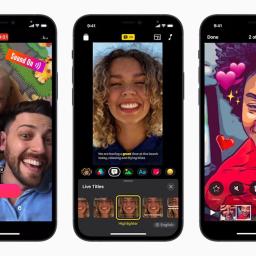 |
on (#70PHW)
It seems to be the end of the road for Apple's Clips app. The company said on a support page that it has stopped updating the video-editing app, and new users can no longer download it from the App Store. Existing users on iOS and iPadOS will continue to have access for the time being, but the company hasn't said how long that will last. "If you previously downloaded the Clips app, you can still redownload it from your Apple account in the App Store," the support page notes.Clips was introduced in 2017 and offers a host of editing tools geared toward creating videos for social media. But Clips never really caught on, and many of the features it boasts are pretty much standard fare on the social apps now. Apple has recommended that Clips users save their videos to their photo libraries or elsewhere, so if you are one of the few users hanging on, you should probably go ahead and do that before it's too late.
|
 |
by Jackson Chen on (#70PGG)
The controversial preservation order requiring OpenAI to indefinitely keep records of its ChatGPT data has been terminated. Federal judge Ona T. Wang filed a new order on October 9 that frees OpenAI of an obligation to "preserve and segregate all output log data that would otherwise be deleted on a going forward basis."The case kicked off in late 2023, with the New York Times suing OpenAI for copyright infringement, alleging that the AI giant trained its models with the news outlet's intellectual property without proper compensation. In May of this year, OpenAI was ordered to retain all of its chat logs so that the NYT could investigate claims of copyright violation. In response, OpenAI appealed the court order, arguing that the preservation order was an "overreach" and risks its users' privacy.However, this latest decision means the AI giant no longer has to preserve chat logs as of September 26, except for some. The judge in the case said that any chat logs already saved under the previous order would still be accessible and that OpenAI is required to hold on to any data related to ChatGPT accounts that have been flagged by the NYT. Moving forward, the NYT is allowed to expand the number of flagged users, as it continues to comb through OpenAI's preserved records.This article originally appeared on Engadget at https://www.engadget.com/ai/openai-no-longer-has-to-preserve-all-of-its-chatgpt-data-with-some-exceptions-192422093.html?src=rss
|
 |
by Jackson Chen on (#70PF5)
After remaking every Game Boy model imaginable, Anbernic is ready to take on the next frontier of classic gaming handhelds: the Nintendo DS. In its usual drip-feed fashion, the handheld maker released a teaser video revealing the Anbernic RG DS. The company didn't offer many details for its Nintendo DS clone, but announced that it would cost less than $100.That price tag isn't surprising for anyone who's been following Anbernic's recipe of recreating iconic handhelds at an affordable price point. However, it's still an attractive price point that's even cheaper than the Nintendo DS' original MSRP of $149.99. Beyond price, Anbernic hinted at a possible new chip and showed off four colorways, including black/red, teal, white and transparent.AnbernicAnbernic hasn't announced a release date yet, but the company often starts selling its devices shortly after the first reveal video. Once available, the Anbernic RG DS will compete against the more premium Ayn Thor that starts at $250. It's important to note that Anbernic paused shipments from its Chinese warehouses to US customers in April following the tariff changes, meaning American buyers were limited to Anbernic's US stock. The previous notice has since been removed, but the Trump administration recently announced another retaliatory tariff on all Chinese goods.This article originally appeared on Engadget at https://www.engadget.com/gaming/anbernics-modern-day-nintendo-ds-dupe-is-cheaper-than-the-original-174405199.html?src=rss
|
 |
by Jackson Chen on (#70PDF)
One of the most affordable EVs in America, the Chevrolet Bolt, has made its long-awaited comeback. After discontinuing the Bolt in 2023, the American automaker has refreshed the popular EV with a 2027 model that has some key upgrades. Chevy said the new Bolt will be available at dealerships in the first quarter of 2026, starting with a comfort trim that goes for at least $29,990. The updated Bolt will get even cheaper in the coming months when Chevy releases an LT base model that starts at $28,995.That price tag offers an upgraded EV with an estimated range of 255 miles and peak charging speeds of up to 150kW. According to Chevy, the new Bolt can charge 2.5x faster than the previous model, which often saw complaints about charging speed. Now with a new LFP battery, the 2027 Bolt can charge from 10 to 80 percent in 26 minutes and has access to both DC fast charging and Tesla's Supercharger network thanks to a native NACS port. Along with an 11-inch driver display, the Chevy Bolt is built with an 11.3-inch infotainment display that can handle navigation, music, and entertainment with Google built-in. Notably, the refreshed Bolt doesn't have Apple CarPlay compatibility, even though previous models did.ChevroletWhile Chevy revived the Bolt, it returns as a "limited run model." The carmaker said in a statement that it "moved quickly to retain the nameplate in our portfolio for a little longer, after hearing feedback from ending production," and added that the "Bolt will be available for a limited time...as one of our highest volume EVs at Chevrolet."This article originally appeared on Engadget at https://www.engadget.com/transportation/evs/the-beloved-chevrolet-bolt-is-back-but-only-for-a-limited-run-161552328.html?src=rss
|
 |
on (#70P9N)
Welcome to our latest roundup of what's going on in the indie game space. Some gorgeous new games arrived this week, and we've got some demos and reveals from upcoming projects to take a look at.Later this month, Lorelai and the Laser Eyes studio Simogo is going to celebrate its 15th anniversary with some news and surprises. Perhaps the developer is porting some of its earlier games to more platforms. I'm hoping that we'll learn about Simogo's next game as well.I'm not holding out hope for a sequel to Sayonara Wild Hearts, which is my favorite game of all time depending on the day you ask me (on other days, it's The Legend of Zelda: A Link to the Past, FYI). However, if Simogo announces a live concert of music from the game, I'm going to do my damndest to be there. I'll be tuning in on October 28 to learn what the studio has for me us in any case.Speaking of showcases, Entalto Publishing and developer GGTech ran one of their own this week. The Out of Bounds event shone a spotlight on a dozen indie games, spanning a breadth of genres.Also, a quick reminder that the latest Steam Next Fest starts at 1PM ET on Monday, October 13. As always, the week-long event will have tons of demos for you to check out. It's always worth trying a bunch of them. You never know, you might end up being one of the first few folks to play the next Balatro, Manor Lords or Deep Rock Galactic Survivor.New releasesAbsolum is a beat-'em-up from the folks behind Streets of Rage 4. It's the first original IP from Dotemu, which has found success with the likes of the terrific Teenage Mutant Ninja Turtles: Shredder's Revenge. It co-developed this game with Guard Crush Games and Supamonks. The art and animation from the latter looks absolutely divine.You can play Absolum solo or with a friend. Since it's a roguelite, you'll gain upgrades to bolster your character on each run while earning experience that goes toward permanent progression. There are multiple paths to explore, so the replayability factor seems strong here. Engadget senior reporter Igor Bonifacic spent some time with Absolum this summer and was impressed by it. The game received strong reviews this week too.Absolum is out now on Steam, Nintendo Switch, PS4 and PS5. Dotemu also has another beat-'em-up, Marvel Cosmic Invasion, coming soon.A few reviews I've read for Bye Sweet Carole (which are fairly mixed) dinged it for having clunky controls and some other quality-of-life problems, such as getting softlocked while trying to complete puzzles. I hope Little Sewing Machine can iron out those issues since the presentation of this game is quite something. It looks like an early-'90s animated movie, with hand-drawn animations and, seemingly, a soundtrack to match.Bye Sweet Carole is a 2D horror-platformer from publisher Maximum Entertainment in which you play as a young girl trying to find her best friend, who disappeared from an orphanage. It's out now on PC, PS5, Nintendo Switch and Xbox Series X/S.Want to see another new game with a unique look that makes it stand out from the crowd? Of course you do.Exploration action game Dreams of Another - which landed on PS5, PS VR2 and Steam this week - sees you creating the environment in a dream-like world by shooting at it. Director Baiyon (PixelJunk Eden) and the team at Q-Games used point cloud rendering technology to create the unusual, but captivating visuals. Dunno why they felt the need to put a clown in this game though. Clowns are rotten things.Dreams of Another arrived on the same day that Q-Games' PixelJunk Eden 2 hit PS4, PS5 and Steam (it's coming to Epic Games Store as well). That game debuted on Nintendo Switch in 2020.Here's yet another lovely-looking project, and this time it's a pixel-art game from Teenage Astronauts and publisher No More Robots. In Little Rocket Lab, you play as aspiring engineer Morgan, who sets out to build factories with the aim of achieving her family's dream of making a rocket ship.It's more build a rocket, girl, than Build A Rocket Boy.This is a blend of a factory builder and life sim, and it looks rather charming. Little Rocket Lab has touched down on Steam and Xbox. It's on Game Pass Ultimate and PC Game Pass.On the subject of pixel-art games, I couldn't not include one that came out this week from a developer based in my hometown. Cairn: Mathair's Curse is a turn-based RPG. It's set in the early 2000s in the Scottish Highlands and it sees a young lad and his mates dealing with the aftermath of a cult casting an ancient curse on their home.Solo developer Ross McRitchie spent five years making Cairn: Mathair's Curse and his partner, Christine, composed the Celtic soundtrack. It's said to have plenty of Scottish humor, which speaks to me. The game, which Steam reviews have likened to EarthBound, is out on Steam now.UpcomingI'm looking forward to checking out Blackwood, which is slated to hit Steam in the second half of 2026. It has a pretty great pitch:
|
 |
by Ian Carlos Campbell on (#70P2W)
Instagram head Adam Mosseri has announced that as part of a test, some Instagram users will be able to try a new menu bar in the app with a different arrangement of tabs. Notably, the new menu bar has dedicated tabs for both Reels and DMs, two of the app's most popular features.If you opt-in to the test, Instagram's current tabs for your feed, search, creating a new post, Reels and your profile page will be replaced by a new layout that swaps search and Reels, and switches the dedicated tab for creating a post with a new one for DMs. Meta's test also makes it possible to swipe between tabs. Mosseri's post announcing the test acknowledges that these kinds of changes "can take time to get used to," which is why the new layout is optional for now. Based on recent announcements though, it's clear Meta has wanted to move in this direction for a bit. Setting aside the long-awaited iPad version of Instagram defaulting to Reels, the company has also said publicly it plans to prioritize messaging and short-form videos moving forward. It even tested a similar Instagram tab redesign with Indian users in early October, where the default tab was Reels and the second tab was DMs."Reels and DMs have driven most all our growth at Instagram over the last few years, so we are exploring making them the first two tabs," Mosseri said at the time. Users who joined Instagram when it was an app for sharing photos might be uncomfortable with its slow drift away from photography, but the shift is reflective of Meta's decision to chase larger social media trends.As posting has become more professionalized, chatting and sharing privately has become more popular. If you take Meta at its word, Instagram is increasingly an app for consuming content made by people you don't know, and then talking about it in private group chats with friends. This test just reflects that reality more accurately.This article originally appeared on Engadget at https://www.engadget.com/social-media/instagram-tests-new-layout-that-puts-the-spotlight-on-reels-and-dms-215407062.html?src=rss
|
 |
by Ian Carlos Campbell on (#70NYN)
Apple is partnering with Spectrum SportsNet to stream select Los Angeles Lakers games directly to the Apple Vision Pro during the 2025-2026 basketball season. The games will be filmed in the Apple Immersive video format, the same VR-friendly filming style the company used to capture the Metallica concert film it released earlier this year.Beyond giving you a reason to blow the dust off your $3,500 Apple Vision Pro, watching the games in-headset will showcase "perspectives impossible to capture in traditional broadcasts," Apple claims. Live games will be limited to headset owners living in the Lakers' regional broadcast territory (Southern California, Hawaii and parts of southern Nevada) and will likely require a subscription to view, but Apple says the full replays and highlights will also be accessible in "select countries and regions from both the SportsNet and NBA apps." There's no schedule of games available yet, but Apple and Spectrum say they'll announce their final plans this fall, with the first games streaming early 2026.While the general consensus on the Vision Pro is that it makes for a great media consumption device, sports programming that takes advantage of its unique features has been largely missing. Apple makes it easy to watch things like Friday Night Baseball and Major League Soccer, but the NBA is the only mainstream sports league trying to offer an experience that's specific to the Vision Pro. Beyond playing live games, the NBA visionOS app can display real-time player stats, stream multiple games at once in multiview and show you a tabletop view of games, complete with a 3D court and tiny players.Now that Apple is reportedly prioritizing smart glasses over a lighter and cheaper version of the Vision Pro, the best thing the company can do is supply existing owners with new things to watch. Not everyone loves the Lakers, but if it opens the door to more live sports in the future, that's only a good thing.This article originally appeared on Engadget at https://www.engadget.com/ar-vr/apple-is-bringing-live-nba-games-to-the-vision-pro-in-2026-184941594.html?src=rss
|
by Sam Chapman on (#6FHVX)
Proton VPN stands out for two main reasons: it's one of the only virtual private networks (VPNs) to include a free plan with no data limits, and it's one of the few services majority-owned by a nonprofit. It's the best VPN in both of those categories, and it makes a strong case for being the best overall.Even if you don't care about the work of the Proton Foundation, Proton VPN is a service worth using. It's easy to install and manage, runs like the wind and meets high standards for security and privacy. It has more IP locations in Africa than any of its competitors. It's even looking toward the future by working toward full IPv6 support.In short, Proton VPN gets our enthusiastic recommendation, especially for torrenting (which it supports on almost every server). It's not perfect - the apps for Apple systems lag behind their Windows and Android counterparts, and the free servers can be noticeably sluggish - but the cons pale in comparison to the pros. We'll get into it all below.Editor's note (9/24/25): We've overhauled our VPN coverage to provide more detailed, actionable buying advice. Going forward, we'll continue to update both our best VPN list and individual reviews (like this one) as circumstances change. Most recently, we added official scores to all of our VPN reviews.Check out how we test VPNs to learn more about the new standards we're using.Table of contents
 |
by Sam Chapman on (#70NYP)
Cybersecurity firm Cleafy just issued a report warning against a rising malware called Klopatra, which infects personal devices by posing as a free VPN app called Mobdro Pro IP + VPN. This is the latest corroboration of a series of warnings delivered by Kaspersky security researchers in 2024 about the increasing number of malware apps pretending to be free VPNs - a warning that's more relevant than ever as VPN usage spikes in response to age-restriction laws.Mobdro is the name of a popular IPTV app that's been taken down by the Spanish government at least once, but the Mobdro Pro IP + VPN app appears to be unrelated, piggybacking on the name to use it as a malware vector. If you download the app, it guides you through what appears to be an installation wizard, but is actually the steps for handing over total control of your device. Once inside, Klopatra abuses accessibility services to pose as you, enter your banking apps, drain your accounts and assimilate your device into the botnet for further attacks.Cleafy believes that Klopatra has already roped around 3,000 devices into its botnet, mainly in Italy and Spain. Its report concludes that the group behind Klopatra is probably based in Turkey, and is actively refining its approach, incorporating innovations and changing with the times. Hence the use of a combined cord-cutting and free VPN app as a mask - it's perfect for exploiting rising frustrations with both streaming balkanization and government clampdowns on web freedom.According to Kaspersky, other free VPNs used as malware vectors in the past year include MaskVPN, PaladinVPN, ShineVPN, ShieldVPN, DewVPN and ProxyGate. With Klopatra's runaway success, Cleafy believes that imitators will spring up. App stores aren't always quick to take down implicated apps, so be very careful to vet any free VPN app before you download it. If you're not sure, you can always go with one of the free recommendations from our best VPN list (Proton VPN or hide.me).This article originally appeared on Engadget at https://www.engadget.com/cybersecurity/vpn/malware-apps-posing-as-free-vpns-are-on-the-rise-175629088.html?src=rss
|
 |
by Matt Tate on (#70NWC)
When Google announced the Pixel Watch 4, it made a point to mention that the smartwatch was "designed with serviceability in mind." Now that it's out, the repair experts at iFixit have taken a look and can confirm Google's claims. The how-to specialist site has called the Pixel Watch 4 the most repairable smartwatch you can buy right now. That's notable, as iFixit points out, because you'd probably expect a sustainability-oriented brand such as Fairphone or Framework to be getting this kind of recognition ahead of Google. (That said, the Fairphone 6 did recently receive a perfect 10/10 repairability review.) But iFixit said it was "truly impressed" with what owners can do to fix Google's latest wearable on their own.The first thing it highlights is the presence of visible screws that don't interfere with the watch's IP68 water and dust resistance rating. Both the vibration motor and battery are also easy to remove, the latter being glue-free and requiring you only to unscrew from its enclosure. As for the display, that's also secured by screws alone (spotting a pattern here yet?) and sealed using a replaceable O-ring gasket that you can easily purchase. iFixit notes that it's harder for square watches to use the same solution, so Google's decision to make the Pixel Watch 4 round boosts its repairability.At the end of its comprehensive video, iFixit awards Google a provisional rating of 9/10 for repairability, calling it "the most satisfying smartwatch teardown" it has performed to date. For transparency, the site points out that it does have an ongoing business partnership with Google, but insists it's completely unrelated to the teardown treatment it gives the Pixel Watch 4.Its perhaps surprising level of repairability isn't the only thing in the Pixel Watch 4's favor. In Engadget's 86/100 review of the device, Cherlynn Low also praised its rapid charging speeds, excellent health and fitness tracking credentials and attractive display.This article originally appeared on Engadget at https://www.engadget.com/wearables/ifixit-says-the-pixel-watch-4-is-the-most-repairable-smartwatch-around-171242107.html?src=rss
|
 |
on (#70NWD)
Chrome is getting a new feature aimed at cutting back on notification overload. If enabled, Chrome can now revoke notification permission for websites that the user hasn't interacted with recently. It's a similar option to the automatic actions taken by Chrome's Safety Check for apps such as the camera or location information. The new feature will roll out to Chrome on both Android devices and on desktop.Chrome revoking notificationsThe browser will, ironically, notify you when a site is no longer going to send notifications. Once a site's permissions have been revoked, a user can re-enable them through Safety Check or by manually re-starting them from the site in question. If you don't want Chrome to ever take these actions for you, you can turn off the permissions revoking option completely.Right now, Google said less than 1 percent of all notifications get any interactions from users. According to the company's internal tests, it found that receiving fewer overall notifications meant people were more likely to click on the alerts they did receive.This article originally appeared on Engadget at https://www.engadget.com/chrome-update-aims-to-automatically-turn-off-unwanted-notifications-170000844.html?src=rss
|
 |
by Lawrence Bonk on (#70NSJ)
The FCC has submitted a proposal that would make it harder for consumers to receive itemized bills with accurate information from their ISPs, as spotted by The Verge. The draft would revise previous "unnecessary" requirements on the grounds that a fact-based list of charges "may confuse customers."This comes as a response to complaints by ISPs over a Biden-era transparency rule that went into effect back in 2024. Compliance with this rule mandates that ISPs make it easier for consumers to compare prices and avoid hidden fees. This typically comes in the form or something called a "nutrition label", which shows speeds, fees and data allowances for internet plans.The FCC is planning on examining ways to eliminate "any other label requirements that are unduly burdensome and provide minimal benefit to consumers." Getting an actual list of what we are paying $100 for each month doesn't seem like a minimal benefit to me.The regulatory agency isn't looking to ditch these nutrition labels entirely, at least not yet, but is seeking to eliminate the requirements to itemize location-based fees. "We propose to eliminate the requirement that providers itemize discretionary, recurring monthly fees that represent costs they choose to pass through to consumers and which vary by consumer location," the draft proposal said.It also targets requirements to make this data readily available to all consumers. The proposal has language that would stop forcing ISPs to make this information multi-lingual and to make it available both online and to customers on the phone. It also seeks to decouple these labels from customer account portals. We aren't sure where these nutrition labels would continue to live.FCC head Brendan Carr wrote a cheeky blog about the proposal that seemed more interested in discussing pumpkin spice lattes over ISP regulation. He said that the proposal seeks to "separate the wheat from the chaff" so that consumers can "get quick and easy access to the information they want and need to compare broadband plans." The language of the proposal seems to indicate the exact opposite of that sentiment, but that's politics for ya.A vote on the proposal is scheduled for October 28. This is all part of Carr's "Delete, Delete, Delete" initiative, which seeks to appease President Trump by removing as many government regulations as possible.This article originally appeared on Engadget at https://www.engadget.com/big-tech/the-fcc-is-trying-to-make-it-easier-for-internet-providers-to-charge-hidden-fees-155305720.html?src=rss
|
 |
by Andre Revilla on (#70NSK)
Ford is cutting the price of the 2026 F-150 Lightning by up to $4,000, as confirmed by the automaker to CarsDirect. The price cuts vary by trim, however, and will only apply to more expensive packages for the electric pickup truck. This comes as the $7,500 EV tax credit expired at the end of September.The 2026 model has a starting price of $63,345 for the STX trim, which is the same price as the previous year's entry-level XLT. The STX replaces the XLT and delivers 536 horsepower, up from the XLT's 452, and 290 miles of range, up from 240.The Flash edition will receive the full $4,000 price cut, giving it a new price of $65,995. The Lariat, originally priced at $76,995, will get just a $2,000 haircut and will sell for $74,995. The Platinum edition will be priced at $84,995 and will not cost less.This summer, Ford announced that it would release an affordable midsize all-electric pickup with a starting price of around $30,000 in 2027. The truck would be built on the company's upcoming Ford Universal EV Platform that will be shared by a new family of products. These models would use Ford's upcoming prismatic LFP batteries.As EV-related tax incentives continue to expire, manufacturers will need to reach into their own pockets to deliver value to consumers. This week Tesla announced the Model 3 and Model Y 'Standard' editions, which give up some luxury touches in exchange for price, with both starting at under $40,000. Inflation has also played a large role in car pricing over the last five years, as $40,000 has roughly the same purchasing power as $32,000 in 2020.Ford recently walked back a program that would have enabled dealers to offer a $7,500 tax credit on EV leases even after the expiration of federal subsidies on September 30, as first reported by Reuters. The plan involved having the company's lending arm purchase new EVs out of the brand's dealers' inventory, after which Ford would apply for the tax credit on the vehicles. That credit would then have been considered in the EV lease terms for customers, passing on the savings.GM was set to have a similar program before canceling it earlier this week. According to Reuters sources, GM killed the program after Republican Senator Bernie Moreno of Ohio raised concerns about it. It is unclear why Ford followed suit.Update 11:23 EST: Added more context.This article originally appeared on Engadget at https://www.engadget.com/transportation/evs/ford-is-cutting-the-price-of-the-2026-f-150-lightning-by-up-to-4000-144241504.html?src=rss
|
 |
by Matt Tate on (#70NSM)
Sonos' Ace headphones didn't get off to the best start, but the brand's first headphones have come a long way since launch, and for $100 off when purchased directly from Sonos or Amazon, they're well worth considering. The Ace are down to $299 from both retailers, and for that price you're getting one of the most feature-packed pairs of noise-canceling headphones on the market right now. When the Ace arrived in the summer of 2024, we praised them for their sound quality, premium design and comfy fit, but had no choice but to ding the headphones for not launching with some of their flashiest features. But that's no longer an issue if you pick up a pair today, as Sonos' TrueCinema spatial audio tech now works as advertised. As a reminder, TrueCinema takes into account the dynamics of your living space when you're using TV Audio Swap to create a virtual 3D audio system in your headphones. The idea is that you feel like you aren't wearing them at all, which is a big claim to make, but there's no denying that True Cinema enhances the experience of watching movies and TV shows while wearing the Ace. Sonos has also improved the Ace's adaptive noise cancellation in updates made available since launch, while phone calls are now clearer than they were when we first reviewed the headphones. They're still expensive at full price, but if you use other Sonos products in your home and think you'll appreciate the Ace's ability to swap audio output with a compatible Sonos soundbar (ideal for late-night movies when the kids are in bed), then it's a very easy recommendation at $299. Follow @EngadgetDeals on X for the latest tech deals and buying advice.This article originally appeared on Engadget at https://www.engadget.com/deals/sonos-ace-headphones-are-100-off-right-now-142323913.html?src=rss
|